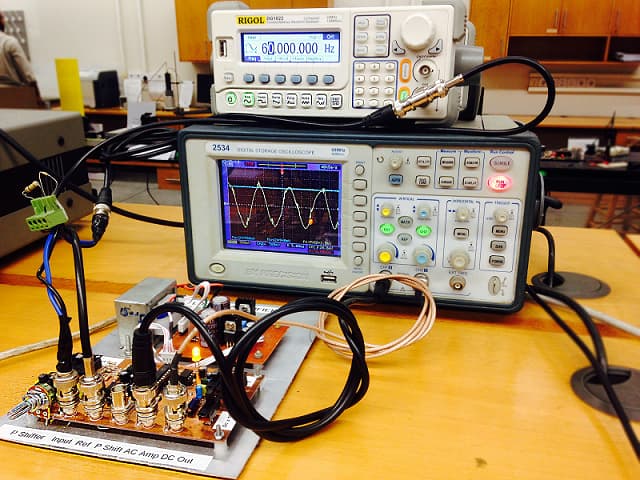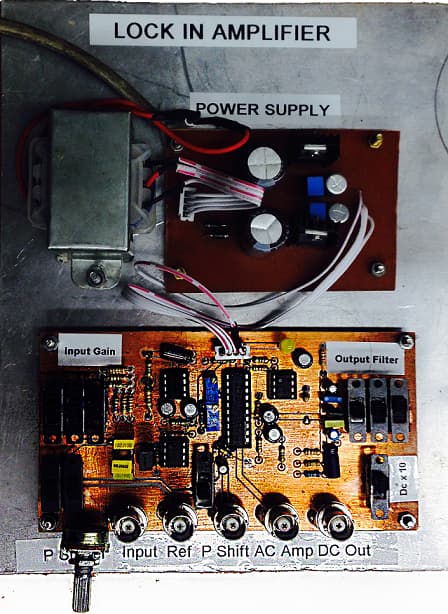A simple and low cost instrument to detect and amplify weak signals, buried in noises.
A lock-in amplifier is a simple, entry level low cost and standalone instrument which is useful for detecting and amplifying signals that are frequency synchronized with a reference signal. It is particularly important for detecting and measuring small signals in the presence of large noise.
It is a device used to recover weak oscillating signals buried in overwhelming noise. The basic working principle of a lock-in amplifier is phase sensitive detection where an oscillating reference signal of frequency fo is multiplied with the input signal that has been modulated at fo and then passed through a low-pass filter.
The design is based on a modulator/demodulator integrated circuit and uses a minimum number of components to accomplish input amplification, phase-sensitive detection, low-pass filtering, and dc amplification of the output signal. Physlock is based on the integrated circuit AD630 and will be helpful in teaching students about low-level signal detection which is commonplace in numerous tasks in the experimental physics laboratory. It can also be used in the research laboratory.

Specifications of Physlock
Please see specs of PhysLock below:
- Power 220 V, 50 Hz
- Reference signal amplitude > 1 V
- Dynamic Range 60 dB to 70 dB
- DC gains 1x or 10x
- AC input gains 1x, 50x, 100x, 500x, 1000x, 2000x, 5000x
- Low pass filter time constants 1 s, 0.1 s, 10 ms, 0.1 ms, 10 us
- Form of input signal Low frequency (< 1 kHz) periodic signal (square to sine converter is also provided).
